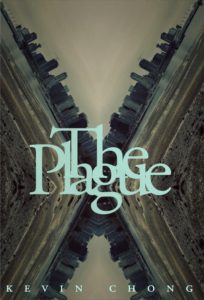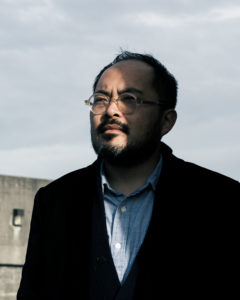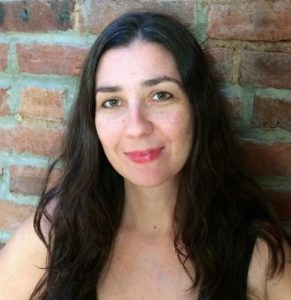A modern retelling of Camus’s existential tale of pestilence and resilience, Kevin Chong’s The Plague (Arsenal Pulp Press) is set in modern-day Vancouver, where, under strict quarantine, the threat of a deadly pandemic forges unlikely alliances and tests the depths of courage and duty.
 Sarah Richards: Why revive a classic?
Sarah Richards: Why revive a classic?
Kevin Chong: Why not? I have wanted to reboot a classic story for a while now. The appeal is that there’s a built-in story and the gravitas of an enduring work. The downside is that you might not get the same credit, or that your version of the classic is only superficially reimagined. I liked that the original gave me a basic structure that freed me up to think about the characters in the story.
SR: The way you have modernized The Plague is impressive. You have female main characters (whereas Camus had none), and your cast represents the socioeconomic and racial diversity of a modern western city. Any difficulties in straying from Camus’s choices—knowing which characters to keep and which to drop, for example?
KC: Thanks. There’s a character who spits on cats in the original, but I couldn’t really come up with an equivalent (there’s a passing reference to someone with a drone). The biggest character jump would have been Father Paneloux, who tries to explain the epidemic through a religious lens. I am not especially religious, so I was not sure I could do this character justice as a priest, so I turned him into the mayor, who tries to explain suffering through a postcolonial point of view.
SR: The mayor was a wonderful character—well-rounded, uncannily familiar, and yet full of surprises. Imagining the world of the novel beyond the last pages, do you think the mayor would/should be re-elected?
KC: He has just started his term so who knows? Politicians have rebounded from worse. I think a mayor has limited powers to effect change in a city—in Vancouver, our outgoing mayor was hamstrung by a promise to eliminate homelessness—and so it becomes about a vision framed by achievable promises.
SR: It is easy to draw parallels between two of the three main characters with those in Camus’s original — Dr. Rieux and Raymond Siddhu — but, refreshingly, you have chosen a female character, Megan Tso, to complete the trio. Is she an amalgam of male Camus characters, or did she fill another narrative need?
KC: Yeah, I was working at first from a Sparknotes summary of the original when I was composing my own take. I kept finding and replacing character names, and at some point I think some of the attributes of Rambert (the reporter, who is also Siddhu in my book) and Tarrou (a writer and Rieux’s best friend) got conflated. So she’s both characters.
The narrative need Tso filled was the outsider to the epidemic. She was also important to me because I wanted to depict a very close friendship between two characters, one that is somewhere between fraternal and romantic that developed as a result of the siege conditions described in the novel.
SR: The arrival of Megan Tso, in Vancouver to promote a book she wrote about death, seems to foreshadow the tragic events to follow. In fact, the very notion that sickness and death and suffering would form the backbone of this novel was unlikely to be a surprise to most readers. Was it liberating or restricting to rework a story with which your readers would be so familiar?
KC: Yes and no. I think you know people would set this alongside the original and perhaps find it shallow and opportunistic. Then again, most people read the original when I did, as a teenager, so they’re not as familiar as you’d think. (I felt bad for giving interviewers and reviewers the “double duty” of reading both books.)
There are also readers who come to the book not having read Camus and thinking it will be a dystopian story or a medical thriller. In both cases, they might be disappointed.
SR: Yet the novel stands on its own, and that is why it stands out. It actually does double duty: reviving a classic and building a unique world with unique characters and struggles. It almost reads like two novels in one. Did it feel like twice as much work as your other books?
KC: Yes and no. Before this novel, I spent two years writing a novel that felt lifeless. This one was quick. I wrote it over about seven months with the bulk of it done in about two months after my non-teaching term began. I think the hard part of the writing process of The Plaguewent into my abandoned project, on which I worked out some logistics of writing a story with multiple storylines in the third person. I really don’t think I could have written a book so easily without writing a draft with such difficulty. I have to remind myself not to compartmentalize my writing process. The good writing days need the bad ones.
SR: A key theme in your novel (as in Camus’s) is resilience. Characters come together to help and heal, without working toward any ideology or reward. Do you believe that society would ultimately behave in this way if faced with similar crisis—even in the Trump era of divisive politics? Do you think if another writer modernized The Plagueseventy years from now, they would arrive at the same conclusions about humanity?
KC: Great question. It’s funny, being at a university and hearing the debate about students who bring all sorts of mental health issues to forefront. On one end, behind closed doors, instructors will talk about how today’s students lack resilience. I am not sure that’s the case. We probably repress less than we did seventy years ago, but I still see people finding strength in the same things: community, friendship and family, kindness, art, and work. Seventy years from now, there will be different paths to these truths, and perhaps different names, but I don’t see us transforming into robots.
SR: Any other classics you want to usher into the twenty-first century?
KC: Not yet. I think if I were to do it again, I might approach it differently anyhow. I would probably borrow more loosely and not spell out the affiliation. Just to be different.
Kevin Chong is the author of six books, including the memoir My Year of the Racehorse and the novels Beauty Plus Pity and Baroque-a-Nova. His work has been published in Canada, the U.S., France, Australia, and Macedonia, and has been shortlisted for the Hubert Evans Fiction Prize and a National Magazine Award. He lives in Vancouver, where he teaches at the University of British Columbia’s Creative Writing Program and the Writers’ Studio at Simon Fraser University. http://kevinchong.ca
Sarah Richards is a writer, editor, teacher, and literacy mentor for inner-city kids in Vancouver’s Downtown Eastside. Her short stories, reviews, and interviews have appeared in prism international, The Puritan, Rusty Toque, Room Magazine, The Cardiff Review, The Danforth Review, Eclectica, Fox Adoption, and UNBUILD walls.

